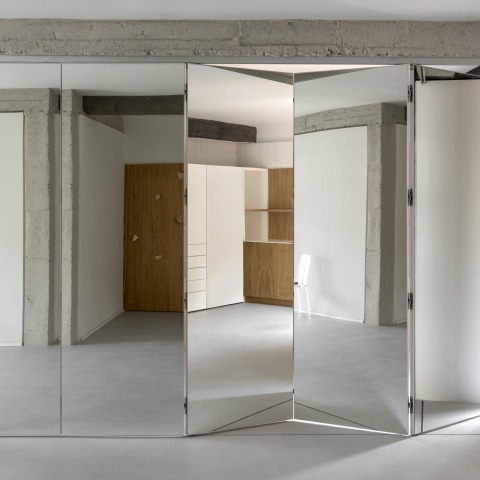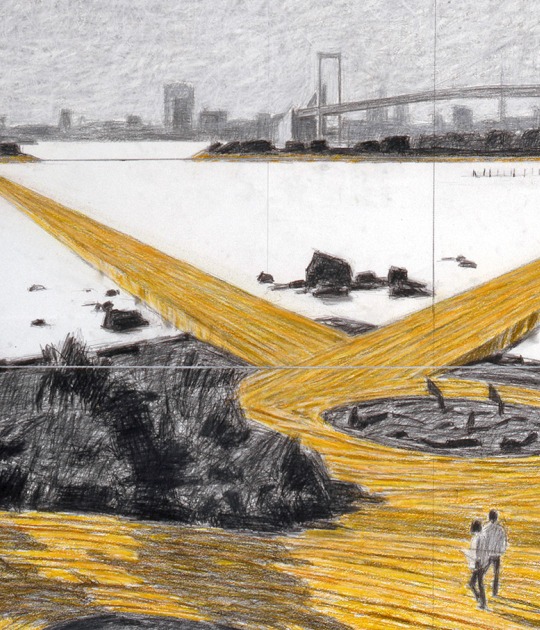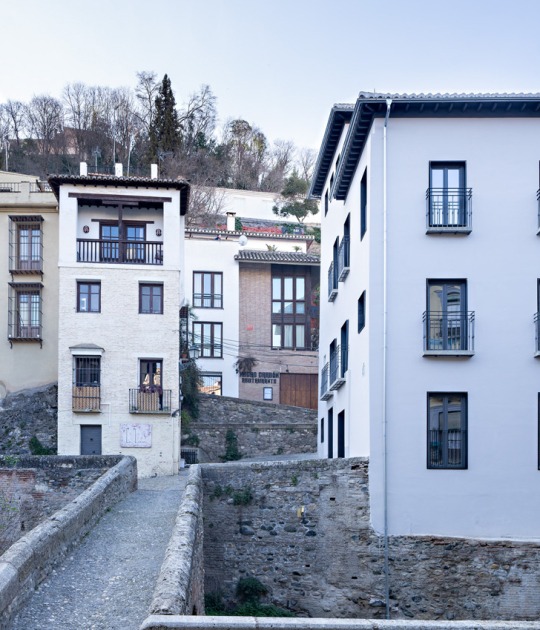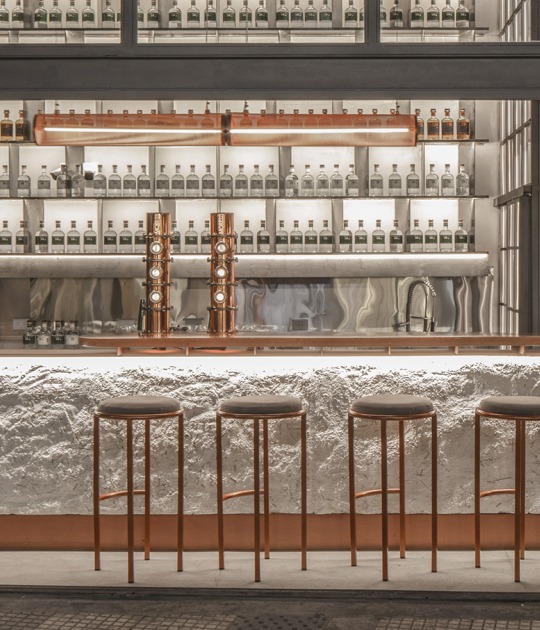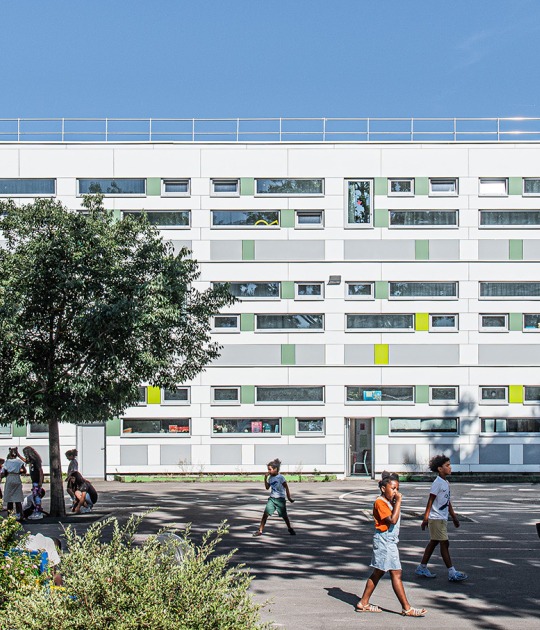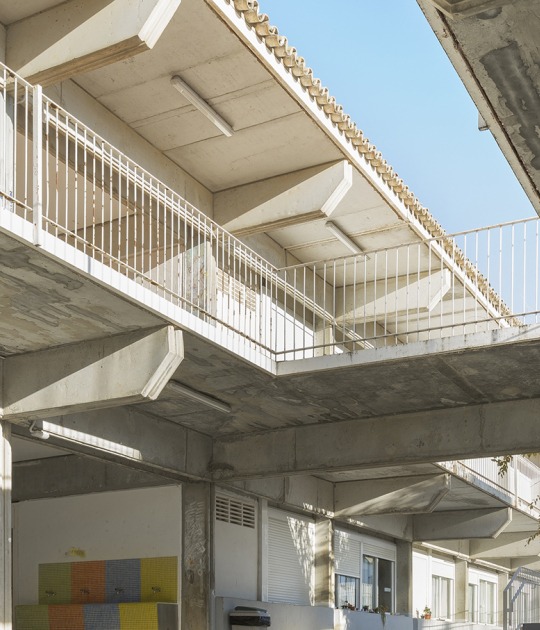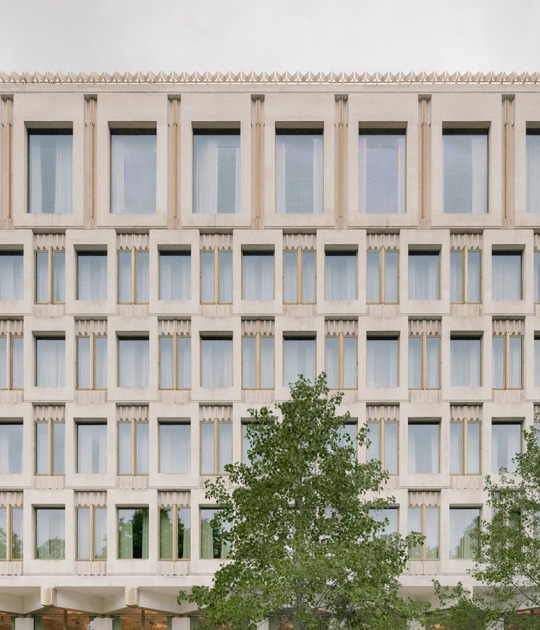The second strategy, Non Binary Space, is based on the intention of generating fluid spaces where flexibility and adaptability is the main element. The infinite new models of life force us to formulate a way of intervening and not intervening, which aspires to maximum adaptability to the changing circumstances of human behavior.

Non Binary Cross Space by PACHÓN—PAREDES. Photograph by Luis Asín.
Descripción del proyecto por Pachón-Paredes
The project occupies and adapts a concrete structure apartment with a super-compartmentalized layout in the Pacifico neighbourhood of the “Ensanche” of Madrid; being part of a series of projects within two on-going investigations:
- “NON-BINARY SPACE”, is an on-going trans-scalar research process, that explores “un-defined” habitats in architecture through the synergies produced between space, time, matter, and energy; with the goal of not compromising the freedom-of-use, occupation, adaptability and interpretation of the space by their users, cultures and socioeconomic vectors over time.
- Secondly, the “CROSS-SPACE” research encompasses a set of transformations, adaptations, rehabilitations, and aggregations that shape a space occupancy strategy, which is native to the architecture's infrastructure or structural type it stands in.
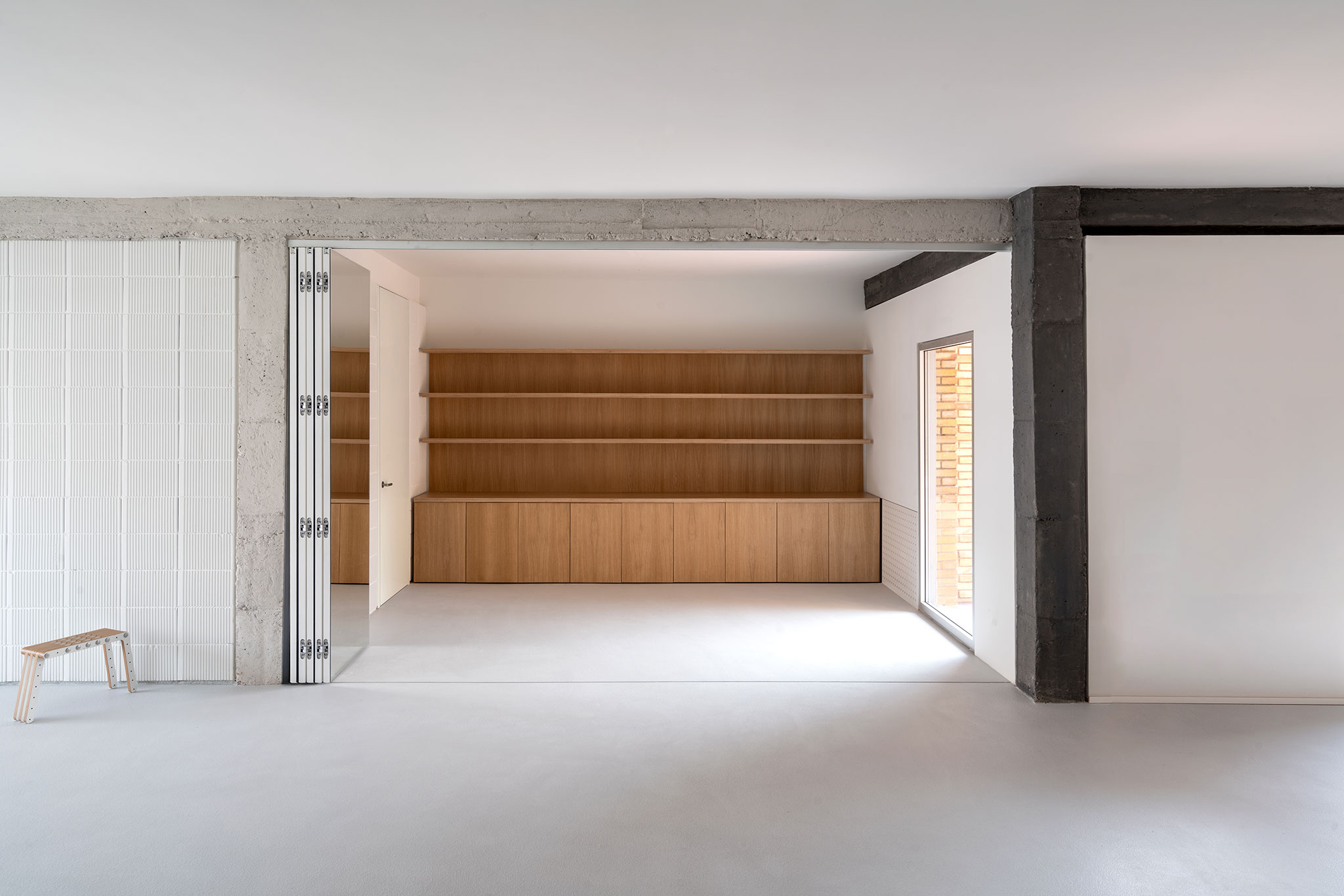
Non Binary Cross Space by PACHÓN—PAREDES. Photograph by Luis Asín.
CROSS-SPACE
Inhabiting structures.
CROSS-SPACE III is the third project to explore this approach of occupying and intervening in structures, in this case in a concrete-made residential building. The spaces adapt to the sizes, widths, heights and constructive constraints imposed by concrete sizing and structures used in the development and suburb areas of several Spanish cities throughout the second half of the 20th century. In the case of Madrid, this type of structure makes up for a substantial amount of the built fabric that filled the gaps left by the “Ensanche” plan and other Metropolitan area suburbs after the civil war.
“CROSS-SPACE” is not only a form of spatial adaptation and transformation but is also constructive and economic, as the solutions used in the planes that form the spatial envelopment, adapt and benefit from the existing conditions within the structural basis of slabs, supports, beams, and facades.
This occupation strategy analyses and translates the possibilities of the grid that results from this specific structural system to define 2 types of spaces: “binary” and defined spaces and “non-binary” spaces, undefined, neutral and flexible. Strategically, the least possible number of defined spaces is considered and constructed in each project, creating a resulting space, a void, “non-built”, the “cross-space”, of an undetermined nature. Depending on the structure to inhabit, the resulting space is defined by its various quadrants, naves and transversal spaces, and by its adjacent or continued spaces, which may be understood (and used) as extensions, aggregates or transitions, resulting in a time-less lack of definition of spaces and associated uses.
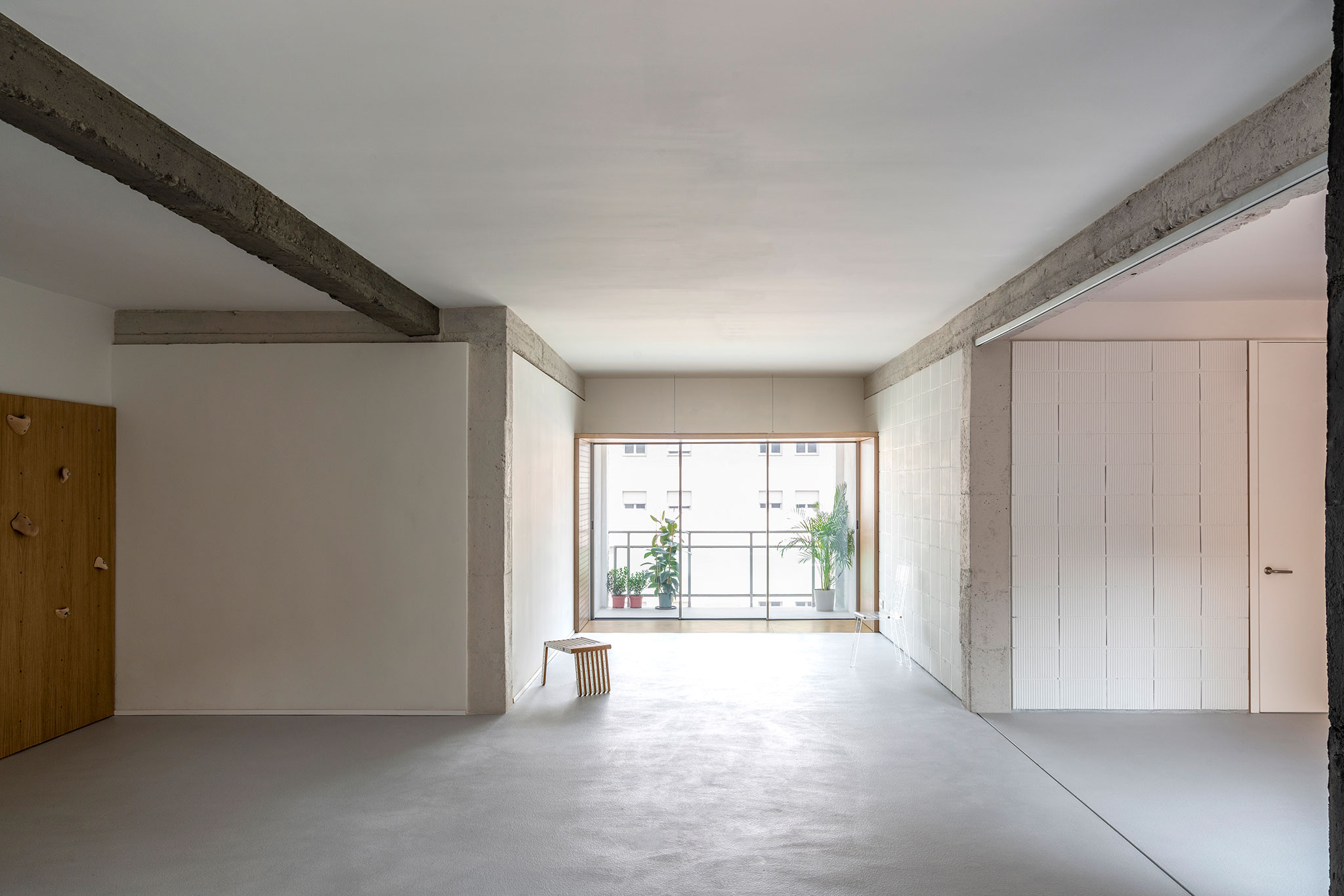
Non Binary Cross Space by PACHÓN—PAREDES. Photograph by Luis Asín.
NON–BINARY SPACE
Fluid space: “Domestic” square, street and façade.
Nobody can exactly determine how we live, how we want to live or how we will live in the near future. In contrast to previous historical periods, where socioeconomic factors dictated functions, privacy, family and domestic lifestyles, which in turn shaped the character of the architecture that contained them and, therefore, the limits on user behaviour; today’s diverse society, full of minorities and social diversity, demands more than ever before: flexibility and adaptability of the socio-cultural and urban models, both at a small and micro scale and at a global and macro scale. Architecture must gain the ability to be fluid and malleable between different uses, functions and typologies of definition and undefinition of space over time. By revisiting the theories around flexibility, hybridization, adaptability and neutrality, we must achieve a way of intervening or not intervening, which aspires to adapt in the best way possible to the ever-changing circumstances of human behaviour.
The non-built quadrants that shape the empty space of the “cross-space”, the free-use spaces, are designed as dynamic and fluid spaces, akin to “square and street spaces, to public and collective shared space”. Its own nature allows users to colonize and program it, to link and connect it, to revert it easily as their needs change throughout the days, weeks, months or years, in the same way as the urban public space does. In CROSS-SPACE (III), the main “façades” that form the 4 backgrounds of the “cross-space”, are regarded as elements that can be programmed or deprogrammed in a specific manner to each quadrant, either for a culinary use, as an office, for practicing sports or for leisure and relaxation; hence, they contain and fit household appliances, services, pantries; doors, hangers, a climbing wall and other sports materials; radiators, air conditioners, doorsteps; tables, computers, screens, shelves and storage rooms…
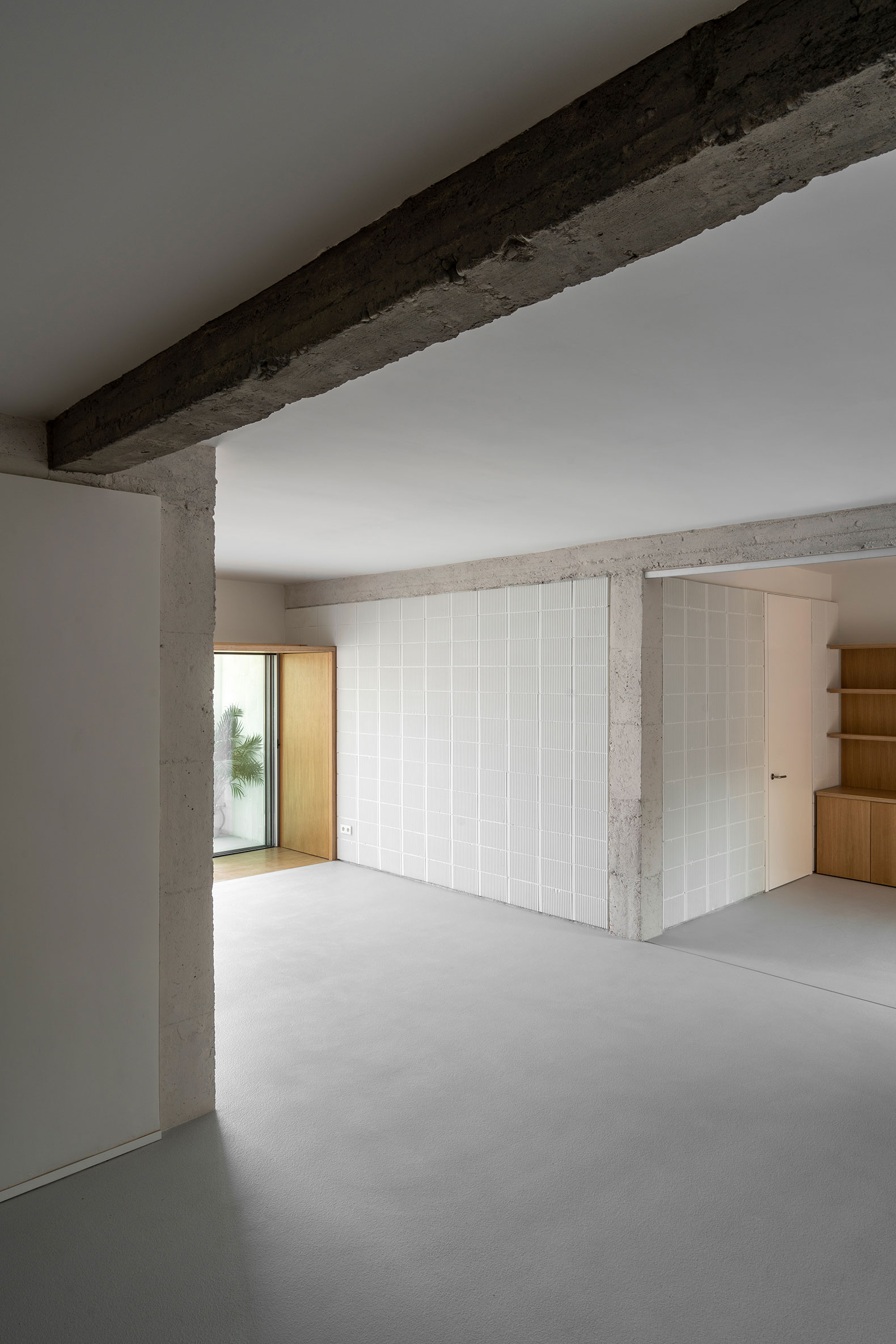
Non Binary Cross Space by PACHÓN—PAREDES. Photograph by Luis Asín.
On the other hand, the “binary” spaces in the most domestic sense, are fitted in the global perimeter of the “non-binary” space, inhabiting the limits of the “cross-space” and supporting the undefined space. As a result, this constructed limit becomes the secondary façades of the public domestic space: bedrooms, toilets, wardrobes, services, panelling, windows, doors, walls, terraces, etc… are “shops, establishments, arcades, alleys, lookouts, fences and gardens”.
As a catalyst between what is private, individual and particular, and what is public, shared and collective, the NON–BINARY SPACE serves as a spatial infrastructure.
Neutral matter and energy.
“Non-binary” places must have distinct physical connections, orientations, thermodynamic properties, and access to exterior areas. “Non-binary” spaces encourage the delivery of different passive and active thermodynamical possibilities to its potential users. The exact perimeters are freed and connected physically to the outer area, providing the greatest possible adaptability to natural lighting, ventilation and access, by recovering terraces that were enclosed at a prior time. The material-constructive approach also considers the non-defined aspect of its elements by being neutral, both in a visual/aesthetic sense and in an invisible/tectonic aspect, in order to make it more universal and flexible and to guarantee appropriation by its users.
